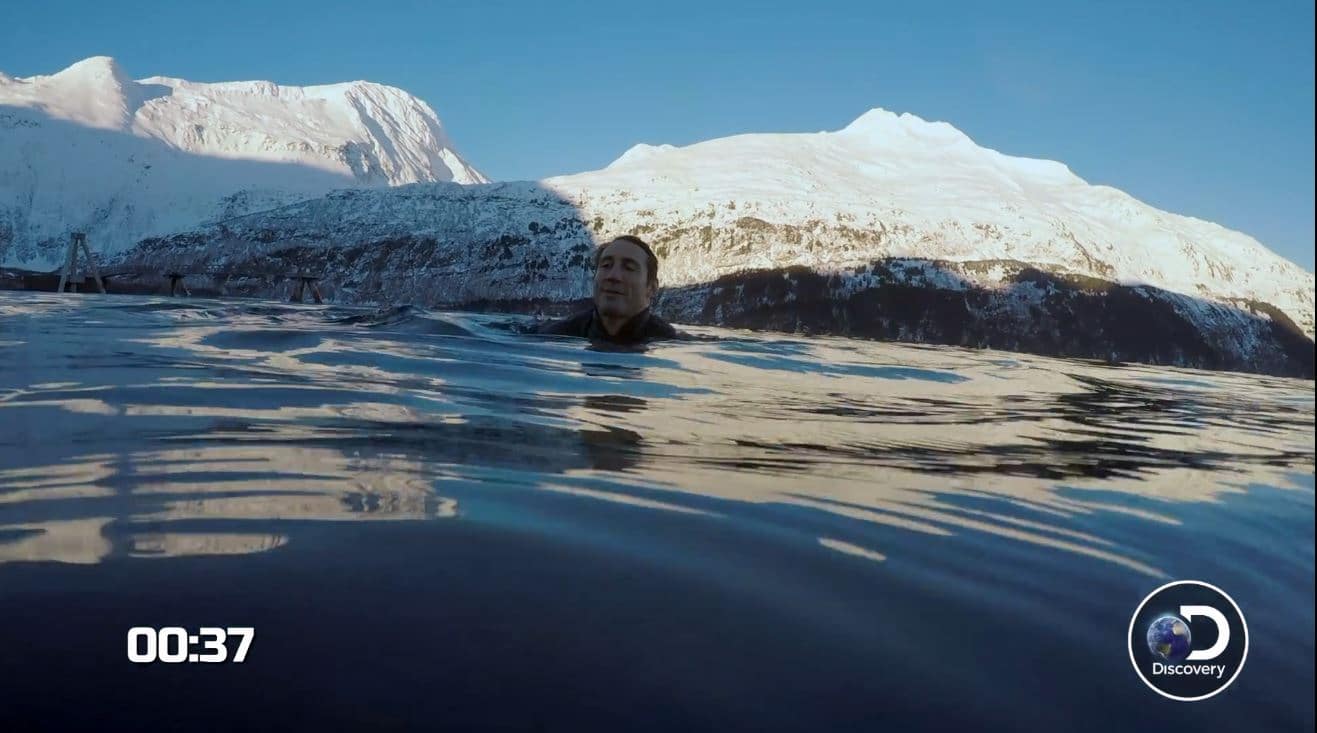
Tonight Tim Kennedy shows us how to survive when immersed in ice cold water as Hard to Kill sets the temperature to zero.
In the supervised experiment, former UFC fighter Kennedy enlists Dr. Gordon Giesbrecht who has created a widely accepted formula for cold water survival.
The 1-10-1 principal created by Dr. Giesbrecht to survive an immersion accident.

According to Dr. Gordon Giesbrecht, the initial shock is the most difficult thing to overcome.
Hypothermia sets in within an hour. Dr. Giesbrecht created the theory of “1-10-1” to describe the three critical phases to survive any cold water accident where someone winds up in the drink.
The Manitoba academic has researched the effects of cold water immersion on hundreds of subjects and has personally experienced those effects himself, and now Tim Kennedy is his next cold water victim.
Read our interview with Tim Kennedy here!
Kennedy, 38, explains Dr. Gordon Giesbrecht’s 1-10-1 principle as a concise way to remember the first three phases of cold water immersion and the approximate time each phase will last.
Initially, the “1” is for the cold shock. Dr. Giesbrecht says that you will experience a “deep and sudden gasp followed by hyperventilation that can be as much as 600-1000% greater than normal breathing.” He cautions to keep your airway clear or run the risk of drowning.
This awful stage will pass in one minute. In that time you must concentrate on avoiding panic and controlling your breathing. This is why wearing a lifejacket during this phase is so important to keep you afloat.
The “10” stand for the time of cold incapacitation. Over the next 10 minutes, you will lose the use of your fingers, arms, and legs for any meaningful movement as Kennedy shows us in the exclusive clip. Dr. Giesbrecht says “swim failure will occur within these critical minutes and if you are in the water without a lifejacket, drowning will likely occur.”
The last “1” is for hypothermia. In ice water, it could take approximately one hour before becoming unconscious due to hypothermia.
Kennedy tries to use his legs but they will not work.
“Tell me what you are feeling here,” says Dr. Giesbrecht who adds “that is good, you were having a cold shock response there,” and then tells him what to do to minimize the initial sharp and jarring reactions Kennedy is experiencing in the frigid waters.
As this conversation is happening, Kennedy’s arms and legs are spasming under the water, as his limbs are refusing to work right. His breathing is shallow and labored.

“The doctor was right about the first 60 seconds…my muscles and the blood vessels in my skin, arms, and legs constrict and spasm…meanwhile my lungs are gasping for air causing hyperventilation and the reduced blood flow to my brain is causing dizziness,” says Tim.
Dr. Giesbrecht says: “Just stay right there” to Tim who is treading water as his core body temperature plummets into the 80-degree range.

“The average person can go into cardiac arrest if they reach 86 degrees,” says Kennedy. He adds: “Below 74 degrees means that person is clinically dead.”
Make sure to tune in tonight to see how Kennedy gets out of this experiment without becoming clinically dead.
Hard to Kill airs Friday at 10 PM on Discovery Channel.